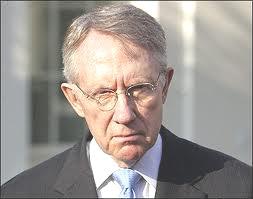 Senate Majority Leader Harry Reid said he can’t “understand why we’re having a problem” with the student loan issue.
Senate Majority Leader Harry Reid said he can’t “understand why we’re having a problem” with the student loan issue.
Dueling measures in the Senate would have kept interest rates on some student loans from moving from 3.4 percent to 6.8 percent, although separate Republican and Democratic proposals each failed to win 60 votes needed on procedural votes. The failure means that, unless lawmakers can find a rare bipartisan agreement, students are likely to face higher rates on new subsidized Stafford student loans this fall but enjoy greater certainty on the interest they will be expected to pay during the life of their loans.
“I cannot understand why we’re having a problem with this,” Senate Majority Leader Harry Reid told reporters after the vote.
The top Republican on the Senate education panel seemed to share that frustration. “If we can’t agree on this, we can’t agree on anything,” said Sen. Lamar Alexander. “This is a manufactured crisis.”
The failure comes just three weeks before interest rates increase on federally subsidized Stafford loans and return to 2008 levels. For students who max out their student loans every year, the rate shift would mean this year’s loans will cost more than $1,000 than last.
“Congress must act immediately to stop the imminent doubling of interest rates on student loans,” the White House said in a statement as President Barack Obama was on his way to North Carolina to visit a school.
Democrats in the Senate unsuccessful sought a two-year extension of the current rates while lawmakers write a comprehensive overhaul of the student loan process.
Republicans, meanwhile, wanted to link interest rates to financial markets. Under Senate Republicans’ plan, interest rates would be based on the 10-year Treasury note and, once the rates were set each year, remain there until the loans were paid off.
The GOP parameters were not that different from President Barack Obama’s budget proposal, which also included interest rates linked to markets, or a version House Republicans have passed through their chamber.
President Barack Obama threatened to veto House Republicans’ legislation.
The Republican chairman of the House Education and the Workforce Committee, Rep. John Kline of Minnesota, said he does not plan to revisit his legislation and that it’s up to Obama to negotiate a deal or get the blame for higher rates.
“It leaves us with one body in Congress—the House—having passed legislation … that would provide the long-term fix to the student loan interest rate problem,” Kline told reporters.
That fact is little consolation for students already carrying debt and likely to pick up more before graduation.
“I don’t think that many students know it’s going to increase,” said Kyle Pendergast, the student body president of Indiana’s Purdue University. “I would say that a lot of students won’t notice until they start paying back their loans. And, at that point, it will be too late.”
Despite Thursday’s twin failures, lawmakers said this would not be the final word even as the clock ticked toward July 1.
“If you believe that it’s appropriate for Congress to pick winners and losers, then support this bill,” Sen. Richard Burr, R-N.C., said of the Democrats’ unsuccessful plan.
“If you believe that that’s not the congressional role and that we need a long-term, permanent, transparent, predictable solution, then vote against this bill and let’s sit down between now and July 1 and write a bipartisan approach that solves this problem once and for all,” he added.
Similarly, aides to Sen. Joe Manchin, D-W.Va., said he would try to find a comprehensive overhaul in the next three weeks, not the next two years.
“I would hope that they come back to us with something that is reasonable,” said Reid, D-Nev.
Time was not on their side.
“We’ve only got 24 days to get the additional votes we need to keep the rate from doubling,” said Chris Lindstrom of the consumer advocate U.S. PIRG.
The July 1 deadline doesn’t block future work, though.
“It is possible—I do not say this happily—it is possible that we get to the July 1 deadline and continue this into July. Not many student loans are made in July. Most are made in the second half of August and September,” said Terry Hartle, a top official with colleges’ lobbying operation at the American Council on Education.
“I could imagine—because the unimaginable is increasingly possible—that we could be talking about this after we miss the deadline. This looks too bizarre to be believed but it’s very much to be believed.”
Yet Congress’ failure could bring predictability and a better deal for some students if rates went to a fixed 6.8 percent rate.
House Republicans’ plan would send interest rates lower in the first few years of their plans but those rates reset annually. By 2017, the interest rates are projected to climb to 7.4 percent and then continue climbing.
The president’s plan, similarly, wasn’t that much better for students who qualify for Stafford subsidized loans. Students borrowing money in 2018 are expected to borrow at 6.1 percent interest—not a huge difference from the current 6.8 percent.
Senate Republicans, too, would be offering fixed rates of 7.1 percent or higher in 2016 if Congressional Budget Office projections hold.
For many, the drama as the deadline approaches seemed familiar.
Lawmakers last year passed a one-year extension of the interest rates in the middle of the presidential campaign. But now, there seems a lack of consensus with little more than three weeks before interest rates increase.
“Why do we have to debate this every year?” asked Sen. Chuck Schumer, D-N.Y.















